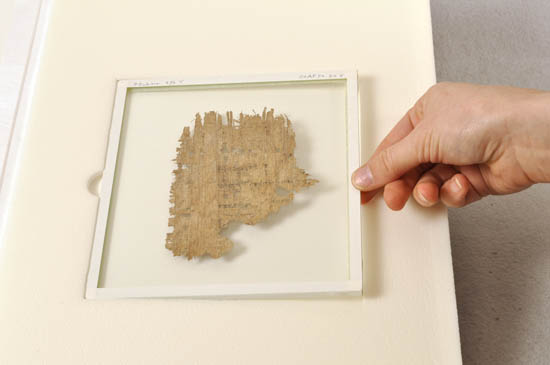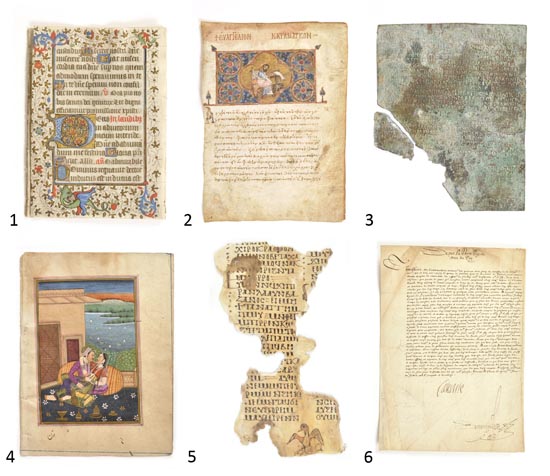Two big rehousing projects have been underway in the conservation lab for several months now. One, the papyrus project, has been mentioned in the conservation department’s own blog, Preservation Underground.
Duke’s papyri collection is one of the largest in the country with approximately 1400 items, each housed between sheets of glass. Until now, those glass “sandwiches” have been loosely stored in boxes. The conservation team is now making individual folders for them, made of mat board and padded with Volara (polyethylene foam), each clearly labeled for safer, easier access.
Once a month, everyone in the department joins in to make hundreds of these customized folders which will go into storage boxes to return to the stacks. Such a big project is a logistical challenge, necessitating lists, spreadsheets, careful documentation, and also cooperation. As a department, we are becoming a well-oiled papyrus-housing machine.


A similar logistical challenge has been the early manuscript housing project, of which the papyrus collection is a subset. As well as books, the collection includes a wide variety of loose materials, from ancient Roman metal tablets, Ethiopic scrolls, pages from Greek Bibles, papal bulls, and oversized sheets from choral books.
Like the papyri, many of these flat items can go in our own customized mat board folders with either a paper pocket or a clear polyester sleeve. But items that are oversized, three-dimensional, or particularly fragile have required special solutions. Some examples can be seen below!


Post contributed by Grace White, Conservator for Special Collections, as part of our ongoing “In the Conservation Lab” series.


